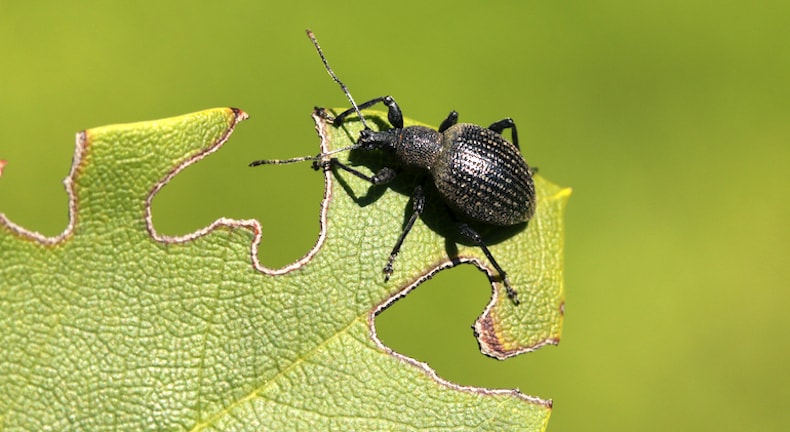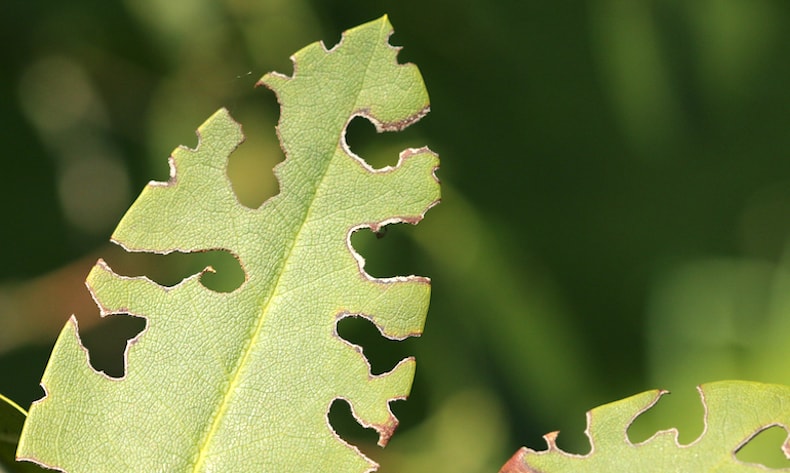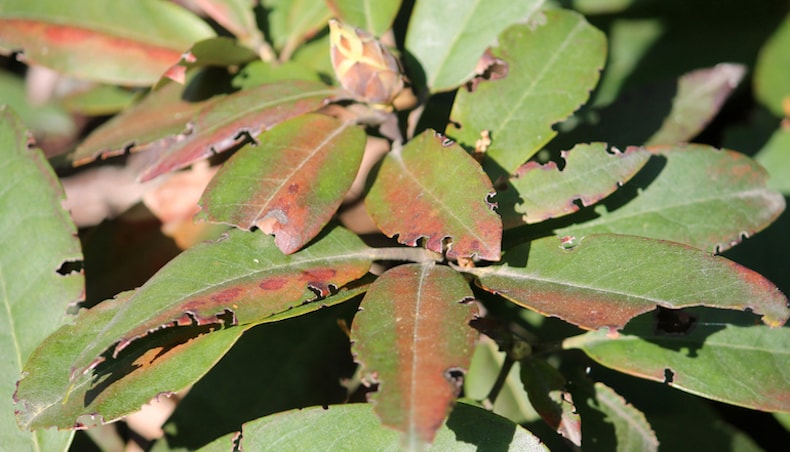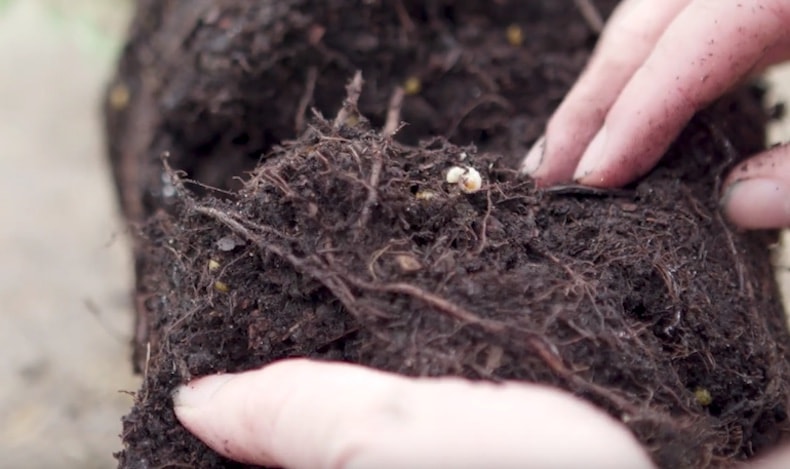Garden pests - Vine Weevils

Vine weevils are hated by UK gardeners
Image: Jiri Prochazka/Shutterstock
Vine weevils are known and loathed by gardeners around the country for their two-pronged attacks on both the foliage and the roots of a huge variety of plants, especially those in containers. Read on to find out how to control this garden pest.
What are vine weevils?
Vine weevils are destructive garden beetles that feed on plants during both stages of their life cycles. The adult weevils are active from spring to late summer, while the grubs feed from autumn to early spring.
The adults are black in colour with a yellow mark on their wings. They are usually around 9mm in length and the females can lay hundreds of eggs during the season. The grubs, meanwhile, are pale in colour with slightly brown heads and around 1cm in length.
How can I recognise vine weevil damage?

Irregular notches on leaves are signs of vine weevil damage
Image: Shutterstock
Adult vine weevils leave distinctive bite marks on foliage, with irregular-shaped notches along the leaf margins. These are particularly visible during the summer months while the adults are active.
However, the plants can usually withstand damage caused by the adult vine weevils. It’s unsightly, but it doesn’t usually result in plants losing vigour. It’s the grubs, which live underground and eat the roots, corns, and tubers, that cause more serious damage, including plant death.
What do vine weevils eat?

The leaves of this rhododendron bush has clear signs of vine weevil damage
Image: Kazakov Maksim/Shutterstock
Vine weevils eat a wide variety of fruits and ornamental plants, both indoors and outdoors, but they are particularly drawn to those grown in containers and those with succulent stems and leaves. In fact, there are few plants that are completely resistant to vine weevils.
Herbaceous plants and shrubs – such as rhododendrons, hydrangeas, evergreen euonymus, and bergenia – are also particularly attractive to the adult beetles, which feed on the foliage.
Even though plants in open ground are slightly less likely to be attacked by this pest, you may nevertheless still encounter infestations, especially for plants like strawberries, young yew plants, primula, polyanthus, and more.
How can I control vine weevils?

The grubs of vine weevils live in the roots of plants
Image: AHDB Horticulture TV
Vine weevils are destructive, but there are several measures you can take to control their numbers and limit their impact on your garden. But whichever solution you choose, you’ll need to stay vigilant to make sure that their numbers don’t have a chance to recover.
- Remove the adult weevils – regularly check the plant (as well as the surrounding area, like under pots) for the beetles and remove them from the plant either by hand or by gently shaking the plant over newspaper. You can also trap them around the pots using special sticky traps.
- Remove the grubs – the grubs are usually found around the plant roots, which aren’t easily accessible, but compost can also be infested. Remove as many as you can.
- Limit their food supply – discourage vine weevils from your garden by growing plants that they are less attracted to. Plants with fragrant leaves – such as Lavender, Lemon Balm, Geranium macrorrhizum, and Mint – appear to be less vulnerable to attack from the adult weevils. They also seem less attracted to furry leaves, such as those of Stachys byzantina.
- Weed regularly – adult larvae love certain types of weeds, such as willow weed, so keeping on top of the weeding may help limit their numbers.
- Encourage natural predators – the natural world can help you keep vine weevil numbers down, with creatures like frogs, hedgehogs, and birds preying on beetles. Create a hospitable environment for these beetle predators by providing food and water.
- Use biological controls – nematodes are effective in killing the larvae in the soil, both in beds and containers, during the warmer months when the soil is at least 5°C.
- Apply a liquid drench to the compost – this kind of pesticide can be applied to compost in containers and will control the larvae. For best results, use it in mid- to late summer so the effects last well into the autumn and spring when the larvae are at their most destructive.
Which plants do vine weevils not like?
Plants with fragrant leaves seem to be less frequently attacked by adult weevils. Plant Lavender, Lemon Balm, Geranium macrorrhizum, and Mint. They also seem less attracted to furry leaves such as those of Stachys byzantina.
Other pages you might like
See all pests & diseases guides
Individual guides
Pests
Sign Up For Exclusive Special Offers




© 2024 Thompson & Morgan. All rights reserved. A division of Branded Garden Products Limited.



